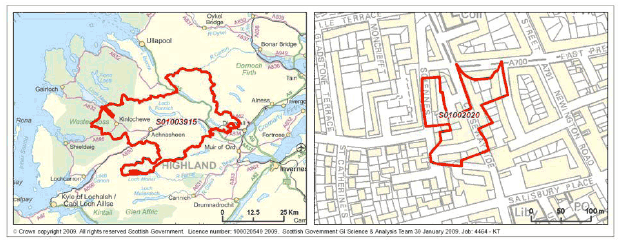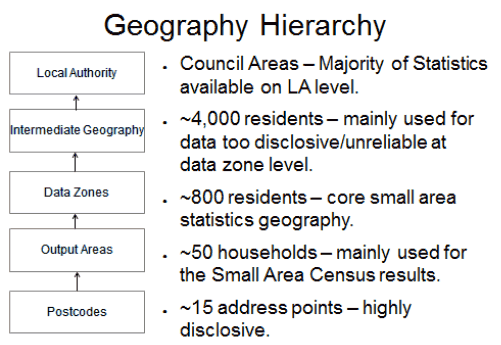Consultation regarding the redraw of Data Zones
This consultation contains proposals for the redraw of Data Zones
2. Background
2.1. The main criteria (constraints) used in the initial definition of Data Zones, in decreasing order of importance, were:
- approximate equality of population, between 500 and 1,000 people;
- compactness of shape;
- approximate homogeneity of social composition;
- existence, where possible of some community of interest;
- accordance with other boundaries of local significance;
- accordance with prominent features in the physical environment.
2.2. More detailed information on how Data Zones were originally created can be found at: http://www.scotland.gov.uk/Topics/Statistics/sns/SNSRef/SNSPapDatZon
2.3. During the initial creation of the Data Zones it was acknowledged that often these constraints could not all be met. Therefore, a good compromise between these constraints was found for each Data Zone. The smallest Data Zone, located in Edinburgh (Figure 1.1, right), covered an area of only 12,367 square metres and had a total population of 501 people in 2001. The largest Data Zone was located in the Highlands and covered an area of 1,159 square kilometres with a population of 636 people in 2001.
Figure 1.1: Largest (left) and smallest (right) Data Zones in terms of area extent.

2.4. In the proposed redraw, Data Zones will now be built from 2011 Census Output Areas (COAs) and will be designed so that they can be built up to form many higher level geographies using the same original constraints above. In turn, COAs are built up from postcodes (see Figure 1.2). Current Data Zones will remain (and will be called 2001 Data Zones) and the new Data Zones will be known as 2011 Data Zones.
Figure 1.2 Geography hierarchy.

Contact
Email: Victoria Kinnear - Lachhab
There is a problem
Thanks for your feedback